110% of agencies would like to generate more revenue” – a humorous overstatement, but it hits close to home, doesn’t it?
In the relentless pursuit of sales, agencies are finding that the usual tactics just don’t cut it anymore. It’s a tough game where creativity meets necessity.
The goal?
To craft outreach strategies that are not just pleasing or innovative, but primarily effective.
In this landscape, your agency’s success hinges on the ability to evolve and stand out.
What is sales outreach?
Sales outreach is the process of initiating contact with potential clients to introduce products or services. It involves personalized communication strategies, like emails, calls, or social media, aimed at building relationships and generating sales opportunities.
Do marketing agencies NEED a sales outreach strategy?
The answer is “no” if they don’t want more clients, more business, and more revenue.
The truth is, they want ALL these things.
In a world where standing still means falling behind, a robust sales outreach plan is not just an advantage, but a necessity.
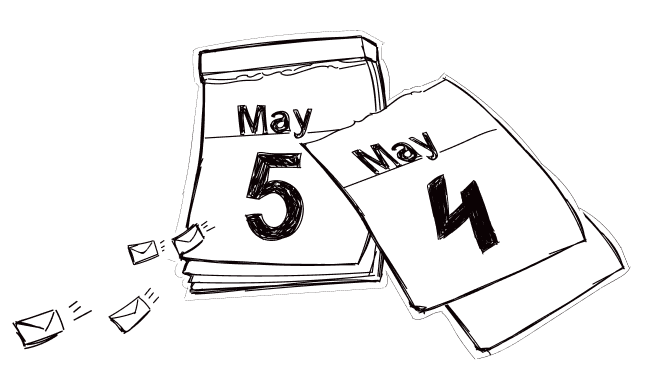
Without sales outreach, agencies rely on “in-reach”.
This means depending solely on existing clients and word-of-mouth recommendations. While VERY valuable, this approach lacks scalability and predictability, limiting growth potential and leaving agencies vulnerable to market fluctuations and client turnover.
Let’s check how you can build your outbound sales outreach strategy.
Best sales outreach strategies for agencies
In this section, we will help you explore some top strategies that blend the art of marketing with the precision of sales.
Don’t overdo your sales outreach
Try not to bombard your potential customers with constant messages.
Would you, yourself, want to get in touch with someone who spams you on each channel, in each message, trying to sell you things straight away?
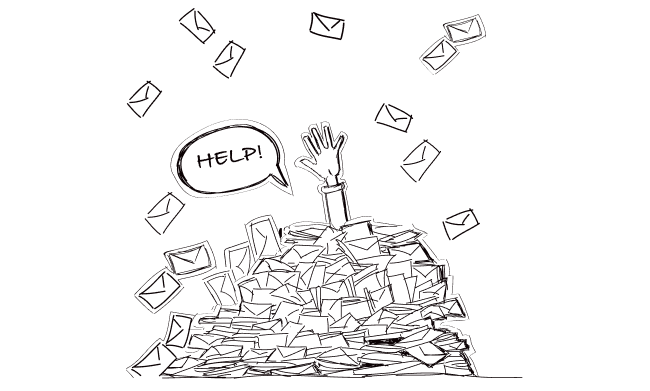
Many agency owners have learned it’s not just about the quantity of outreach emails or phone calls, but striking the right balance.
Effective sales outreach means understanding your target audience and choosing the right outreach channels. It’s about quality, not just volume.
Personalized messages, timed right, can be your most effective sales tool, rather than overwhelming your prospects with a flood of communication. It can yield better results than sheer persistence.
At Yes Chef Studio, our cold email approach begins with identifying our ideal clients. We then categorize them into distinct ‘buckets’ for a targeted yet scalable approach.
Using BuiltWith, we pinpoint potential leads that align with our ideal customer profiles.
Then, Phantombuster extracts their contact details, laying the groundwork for our outreach emails.
We chunk our sequence into three parts: an introductory email highlighting our value proposition, followed by a case study showcasing our success for a similar company or challenge, and finally a brief list of benefits that they will get from partnering with us.
Our strategy relies on how well we’ve set up the ‘buckets’ – Balance here is crucial; too niche, and scalability suffers, too broad, and the personal touch is lost so the emails don’t perform as well.
Brandon Horvatić, co-founder at Yes Chef Studio
Train your sales reps on psychological principles
Forget the usual sales script. Dive into the human psyche. Teach your sales team the art of reading between the lines, understanding unspoken needs, and responding to subtle cues. It’s like becoming a mind-reader, but for sales.

For example, you can train your team on:
Reciprocity principle
People tend to return favors. In your emails, offer something of value first, like a helpful resource or insight, creating a subconscious obligation for the recipient to engage back.
Social proof
Humans look to others to determine correct behavior. Include testimonials or case studies in your emails to show how others have benefited from your service, subtly encouraging the recipient to follow suit.
Stressing authority
People respect authority and expertise. Position your team as industry experts by sharing knowledge, insights, or news, making your emails more persuasive and your advice more credible.
Scarcity principle
Limited availability increases desirability. Highlight the exclusivity or time-sensitive nature of your offer in emails, to inspire a sense of urgency that prompts quicker decision-making.
Consistency principle
Consistency is important to people. Frame your email content to align with the recipient’s known values or previous decisions, and make it easier for them to say yes to your proposal.
Liking principle
People are more likely to say yes to individuals or organizations they like. Personalize your emails to reflect shared interests, values, or experiences, fostering a connection that makes recipients more receptive to your message.
Commitment principle
Once someone commits to a small request, they’re more likely to agree to a larger one. Start with a low-commitment ask in your initial emails, such as reading a blog post or watching a short video, gradually building up to your main proposal.
Personalize your emails with specific client details
Don’t just personalize. Hyper-personalize. Your emails should feel like they’re from a friend who remembers not just names, but preferences, past conversations, and yes, even their dog’s name. Make each email a “Hey, I really know you” moment.

On the other hand, don’t go too far and make it scary. While personalization is key, there’s a fine line between being attentive and being intrusive. Your goal is to show that you’ve done your homework and care about their specific needs, not that you’ve been overanalyzing every detail of their life.
Five things to include
- Reference a recent company milestone or news article about their business.
- Mention a shared interest or topic from a previous conversation.
- Acknowledge a recent post or achievement they’ve shared on professional social networks.
- Use their name and company name naturally in the email.
- Tailor solutions or suggestions based on their business needs or challenges discussed before.
Five things to avoid
- Overusing personal information that’s not directly related to the business context.
- Making assumptions about their needs or interests without prior discussion.
- Referencing personal social media activity that’s unrelated to professional interactions.
- Using their name excessively, making the email feel forced or artificial.
- Including personal details that were not shared directly with you, which can come across as invasive.
Use social media for targeted outreach efforts
Turn your team into social media detectives. Use these platforms to uncover what tickles your prospects’ fancy. Then, craft outreach campaigns that hit right where it matters – their interests, challenges, and what’s on in the industry.

You can use the below 4Ls to keep your communication consistent:
- Like and interact. Encourage your team to actively like and interact with prospects’ posts. In addition to building recognition, this lays the groundwork for more receptive outreach.
- Learn from trends. Stay informed about the latest trends in your prospects’ industries by monitoring social media. As a result, you will be able to craft timely and relevant messages.
- Listen to concerns. Pay close attention to the challenges and frustrations your prospects express online. Your sales and marketing teams should address these concerns directly in their customer outreach, offering tailored solutions or insights.
- Laud their achievements. Make it a point to acknowledge and celebrate your prospects’ successes in your communications. A genuine interest shows and builds a stronger relationship.
Offer valuable content in your communications
You’re sifting through your inbox, and amidst the sea of ‘Special Offers’ and ‘Urgent Updates,’ there’s an email offering genuine insights tailored to your interests.
That’s a breath of fresh air, right?
Your emails should be that breath of fresh air.
Pack them with nuggets of wisdom, tips, or even a dash of humor that your audience can’t just google.
Leverage video messages for a more personal touch
Let’s face it, we’re all a bit used to text.
Why not mix it up with a video message?
A video can convey your enthusiasm, sincerity, and, oftentimes, it’s just more engaging. Plus, seeing a real face behind the words? Priceless.
And what’s the best way to use it?
Embed a personalized introduction video
Start your email with a short, personalized video where you introduce yourself and briefly mention how your agency services can benefit the recipient. Adding a human touch right from the start makes your message more memorable.
You can use services like Loom or Vidyard to quickly record one for your sales teams. They can personalize their outreach messages via industry or via particular company and get more qualified leads who, otherwise, would never convert.
Include video testimonials
Alongside your text, embed video testimonials from satisfied clients. This not only adds credibility to your claims but also allows potential customers to see and hear firsthand experiences, enhancing trust and engagement.
Showcase agency portfolio through video
Create a compelling video showcasing your agency’s best work, highlighting successful campaigns you’ve managed for other clients. Embed this video in your outreach emails to give potential clients a dynamic and engaging overview of your capabilities and achievements.
Craft compelling subject lines that spark curiosity
Subject lines are like the headline of a newspaper – you want them to grab attention. Think about what makes you click on an email. Is it a question that gets you thinking? A hint at some insider knowledge? Use that same logic for your sales outreach. Keep it short, snappy, and a bit mysterious. It’s all about making your target audience think, “I’ve got to see what’s inside!”
Regularly test and optimize email templates for mobile responsiveness
Everyone’s glued to their phones these days, right? So, when you’re sending out emails, you’ve need to double-check if they look good on a small screen. Nobody likes to squint or scroll sideways to read an email. Test your emails on different devices to make sure they’re easy to read. If it looks good on a phone, you’re golden.
Use email automation for timely follow-ups and nurturing leads
Here’s the thing about following up: you don’t want to be that annoying person who keeps bugging. But you also don’t want to be forgotten. That’s where email automation comes in. Set up a system that sends follow-up emails to prospective buyers at just the right time.
Analyze email campaign metrics to understand what works
You’ve got to be a bit of a detective here. Keep track of how your emails are doing. Are people opening them? Clicking on links? What’s making them hit that ‘reply’ button? Use that info to tweak your game.
Maybe it’s changing up the words you use, the time you send emails, or who you’re sending them to. It’s all about finding that sweet spot.
Follow up consistently – but not aggressively
Follow-up makes a fine line between being persistent and being pushy. Sales outreach statistics prove it. If your team falls into the 48% of salespeople who never make follow-up calls, it’s time for a strategy shift. Why? Because a staggering 80 % of sales are clinched only after five follow-up calls. The same can apply to emails or any other outreach channels your sales or marketing teams are using.
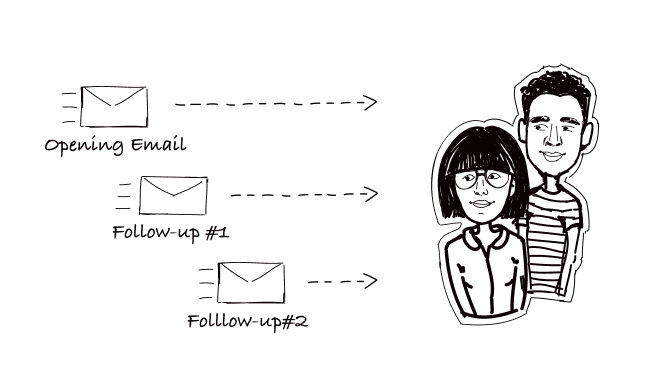
Each follow-up is an opportunity to provide additional value and to remind them of your presence without overwhelming them. It’s about being there, consistently but respectfully, showing that you understand their needs and timeline.
It’s worth adding follow-ups to your sales outreach strategy for one more reason: they keep the conversation going and build trust.
When you follow up, you’re not just reminding your potential clients about your services, but also demonstrating your commitment to their needs and your reliability as a business partner.
This steadfast, yet gentle approach can increase the chances of turning a maybe into a definitive yes in your agency sales outreach strategy.
Use storytelling to make your pitches more engaging
Transform your agency pitches into captivating stories. As an agency owner, you know the power of a good narrative. Use that skill in your sales outreach. Share a tale that resonates with your client’s journey, making your pitch not just a proposal but a story they want to be part of.
Incorporate these tactics into your sales outreach strategy, turning every email campaign and phone call into a chapter of a compelling story that speaks directly to your target audience. Engage your sales reps to weave a narrative aligned with your sales funnel based on the needs and aspirations of potential customers.
Remember, each outreach message is an opportunity to advance the plot, drawing your clients closer to the point where your solution is the hero.
Here’s how you can leverage that in practice:
“Before and after” case study
Subject line: Discover how [client’s company name] grew their sales by 52% in 6 months
Begin with a brief introduction about a past client who faced challenges similar to those of the prospective client. Narrate the journey of how your agency stepped in, the strategies implemented, and the transformative results achieved. Use a “before and after” format to highlight the impact. Include a link to a detailed case study on your website for more in-depth information.
Aligning with client’s aspirations
Subject line: Increase sales with a redefined sales process by [your agency’s name]
Craft a narrative that positions the potential client as the hero of the story. Describe a scenario where they overcome their marketing challenges with your agency as their guide and ally. Use emotive language to paint a picture of their desired future state – increased sales, brand recognition, etc. – and how your agency can help them achieve it.
Presenting cutting-edge solutions
Subject line: You can save 40% operational time with [our solution]
Tell a story about how your agency has consistently stayed ahead of the curve in digital marketing trends. Use real-life examples of innovative campaigns or tools you’ve developed. Provide examples of how these solutions can be customized to meet the unique needs of the prospective client, allowing them to remain competitive.
Segment your audience for tailored messaging
Segmentation isn’t just for marketing. You should understand the nuances of different client types. Apply this to your sales outreach. Create audience segments and tailor your messaging to fit each unique piece of your client mosaic.
It’s like crafting a bespoke suit – it just fits better.
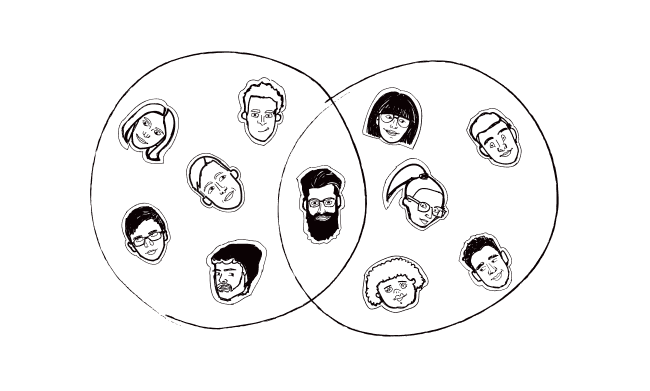
Leveraging sales outreach tools and software, you can efficiently segment your audience, so that each outreach email or campaign is finely tuned to the specific needs and interests of each group. This targeted approach not only enhances the effectiveness of your sales process but also significantly improves response rates, as potential customers feel more understood and valued.
Remember, in the world of sales, a personalized touch can transform a potential customer into a paying customer, making the right outreach strategy a key takeaway for any successful sales organization.
Incorporate client testimonials and case studies in your outreach
You’ve helped clients achieve great things; now let these stories do the talking. Incorporate testimonials and case studies into your outreach. This isn’t just bragging, but more of showing potential clients a mirror of their future success with your agency.
Here’s how you can add testimonials to your outreach:
- Feature testimonials in email outreach. Include short, impactful client quotes in your email campaigns, especially those that speak directly to the pain points and aspirations of your target audience.
- Highlight case studies in follow-up communications. After the initial contact, send detailed case studies as part of your follow-up strategy. This not only builds trust but also demonstrates the effectiveness of your product or service.
- Use testimonials in LinkedIn messages. When reaching out to potential clients or decision-makers via LinkedIn, personalize your message with relevant testimonials that resonate with the prospect’s company or industry.
- Incorporate success stories in sales presentations. During in-person meetings or video calls, present case studies and testimonials that align with the buyer’s journey and showcase how you’ve helped similar clients, thereby closing more deals.
Here’s one example from Skillshare. While it’s not an agency sales outreach per se, it can be used and adjusted by sales organizations:
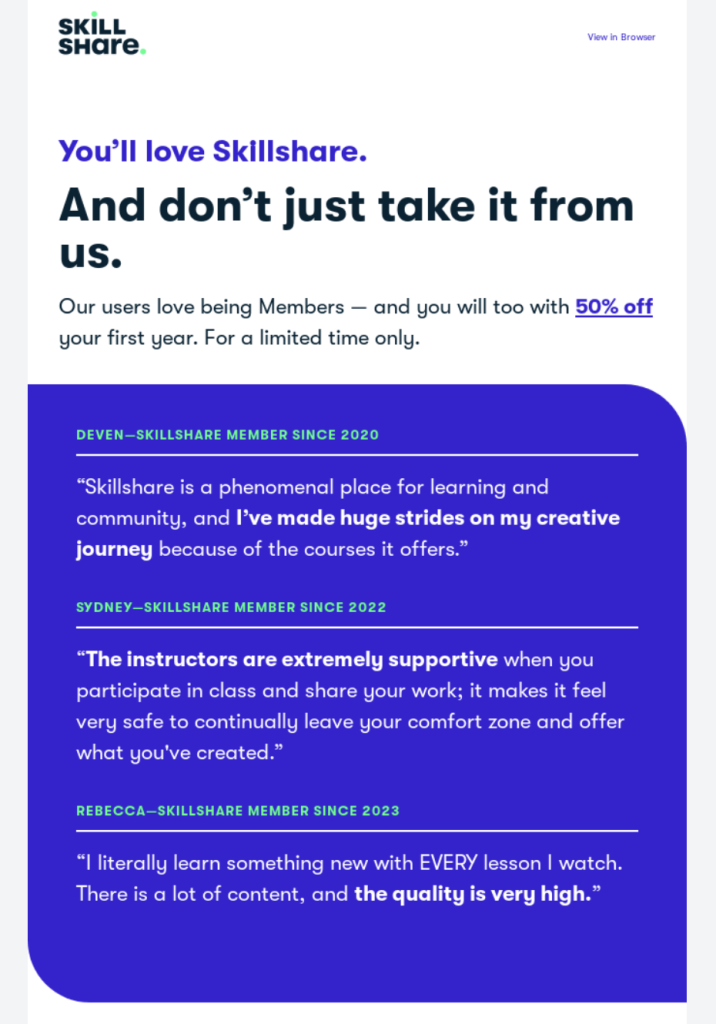
Host virtual events to attract potential clients
Think about throwing a virtual party, but for business. Hosting online events can be a magnet for potential clients. You could run:
- webinars,
- Q&A sessions,
- virtual networking events.
You can also team up with other companies and agencies. That’s exactly what Agorapulse planned to do for their Summit.
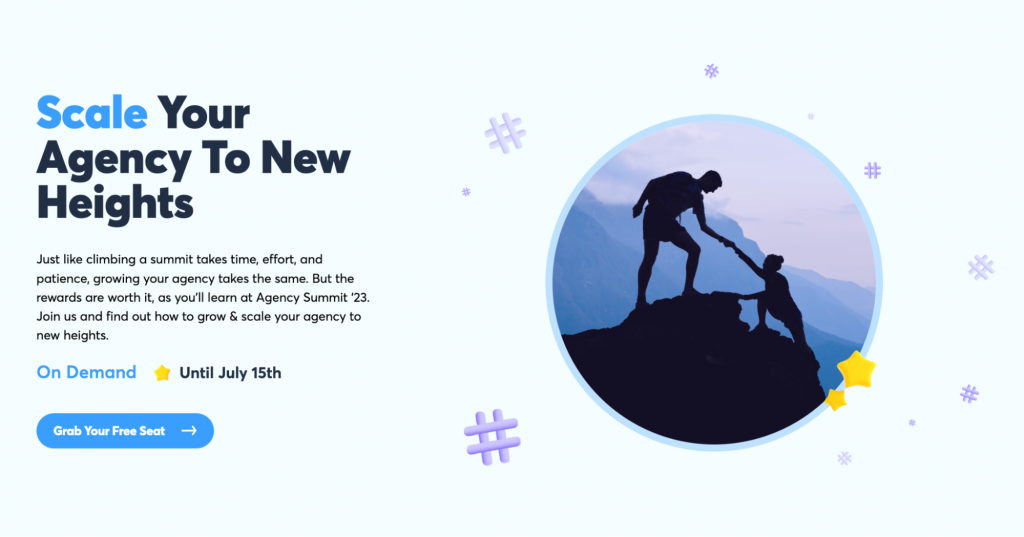
Make them fun and informative. It’s all about giving a taste of what your agency can do, without the hard sell. And, you can show off your team’s expertise and get people talking about your brand.
Offer exclusive services to new clients
When you’re reaching out to potential clients as an agency, it’s all about making a strong, memorable first impression. You’ve got to be smart and savvy – every move counts. Think of it like this: you’re not just sending an email or making a call, you’re starting a conversation that could lead to a great business relationship. And one of the best ways to kick off this conversation? Offer something special right out of the gate. Exclusive deals or unique offers can really grab attention.
Use some of our ideas, perhaps?
- First-month free trial of premium services. Let them experience the best you have to offer, risk-free.
- Complimentary strategy session. Offer a one-on-one session to discuss their specific needs and goals.
- Access to exclusive content. Share your latest research, e-books, or webinars with them early or at their request.
- Customized analysis report. Provide a detailed analysis of their current strategy and how your agency can enhance it.
- Priority customer support. Answer their questions quickly and personally.
- Special discounts on bundled services. Specify a package of services that suits their needs and offer a special price.
- Invitation to client-only events. Give them access to exclusive events, like workshops or networking meetups.
Power up your sales team with the best sales outreach software
As an agency, you’re not just reaching out to potential clients for yourself; you’re also doing it on behalf of your clients to connect with their prospects. This double-duty outreach means you need tools that are up to the task.
You can automate those time-consuming tasks, like follow-ups and scheduling, freeing up your team to focus on what they do best – building relationships and closing deals.
Plus, with the analytics these tools offer, you’re not just shooting in the dark. You can see what’s working and what’s not, and tweak your strategies accordingly.
It’s all about getting your message to the right people, at the right time, in the right way.
And when you’re doing this for your clients too, showing them the results you can achieve with this method, it’s just another reason for them to trust you with their business.
Key takeaways
- Diversify your outreach, and use multiple channels. Through social media, email, or direct contact, you can reach potential clients wherever they are.
- Cold emails remain a potent tool in your sales arsenal. Craft compelling, personalized messages that resonate with your target audience. Each email should be a valuable touchpoint in your sales process.
- Equip your team with advanced sales outreach software. This technology streamlines your outreach efforts, enabling efficient tracking, scheduling, and follow-up, which is crucial for scaling your agency’s outreach capabilities.
- Don’t wait for clients to come to you. Proactively reach out, anticipate their needs, and stay ahead of trends. In addition to demonstrating your agency’s initiative, this proactive approach positions you as a forward-looking leader.
- Every interaction should provide value to your potential clients. Whether it’s through insightful content, helpful solutions, or understanding their challenges, make sure your outreach efforts are always value-driven.
Conclusion
Want to make more sales in your agency? You need to fine-tune your sales strategies, and add a sales outreach strategy if you don’t do that yet. You shouldn’t rely on clients knock-knock-knocking on your doors – bring them to your sales funnel yourself. Woodpecker can help you do so!
READ ALSO
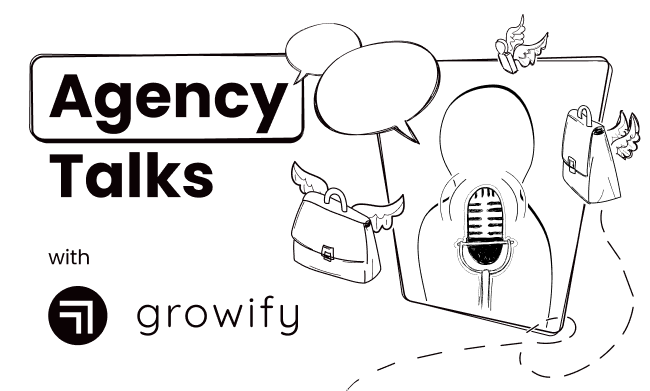
Agency Talks: from an expert to a lead gen agency owner
In the early days of your career, it's much better to learn from the experience of others than to figure it all out on your own. After a few years, if you’re persistent, you’ll become an expert in your chosen field, and that's when many people start thinking: “As an expert, I can sell my service on my own behalf instead of working for someone else.".

Client Reporting – 6 Best Practices for Agencies
Graphs, metrics, statistics, reports… Are you having trouble connecting all of the data in a way that truly demonstrates the value of your services to your clients? You might be uncertain as to how many details your reports should contain or which metrics are most important. And even if you have the right selection of metrics, you might still struggle to organize them in a logical order.
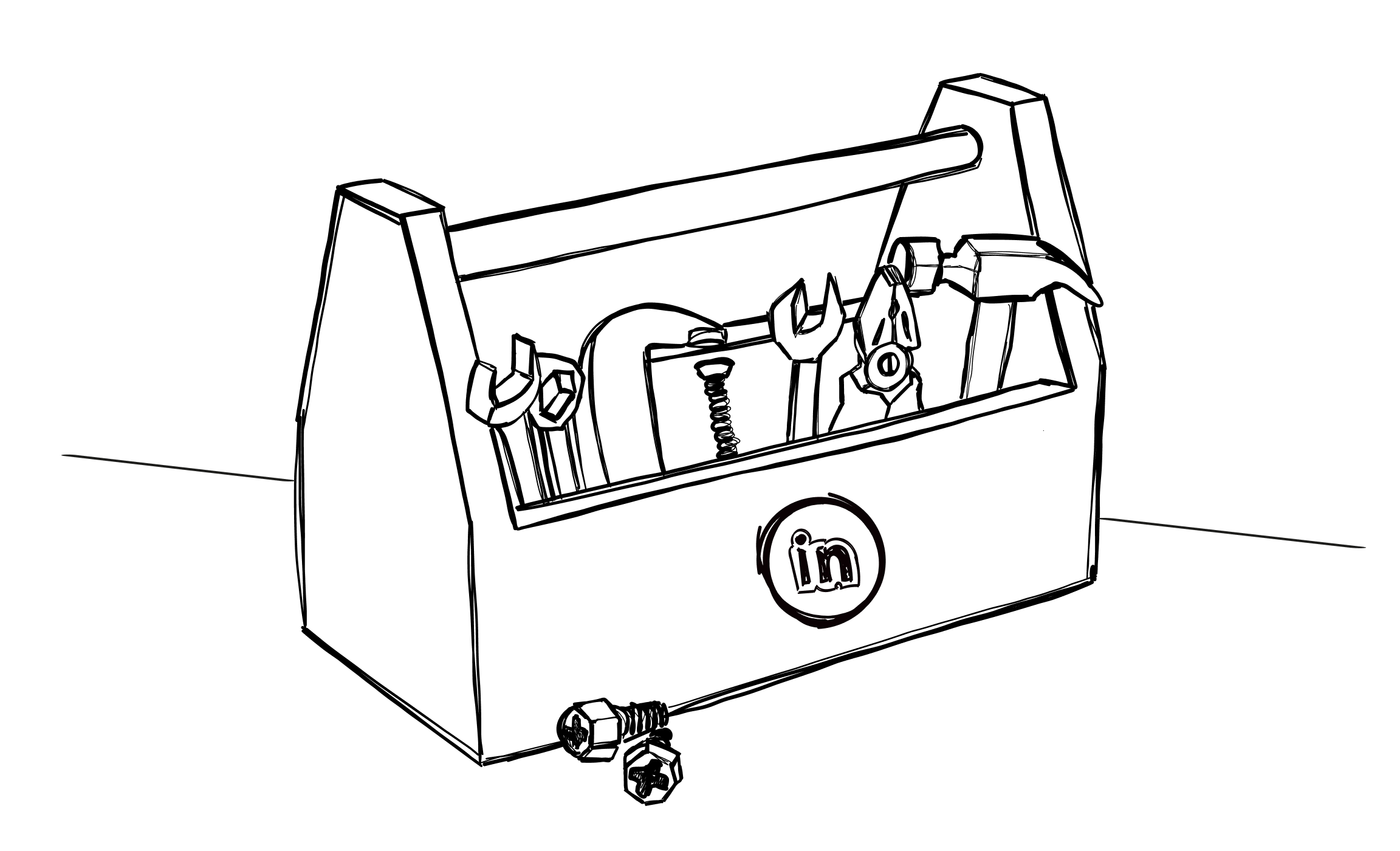
14 LinkedIn Automation Tools That Make Outreach Easier & More Efficient
Sales and marketing teams have long known about the potential goldmine of contacts to be found on LinkedIn but many are just now discovering the shortcuts to success offered by LinkedIn automation tools.

